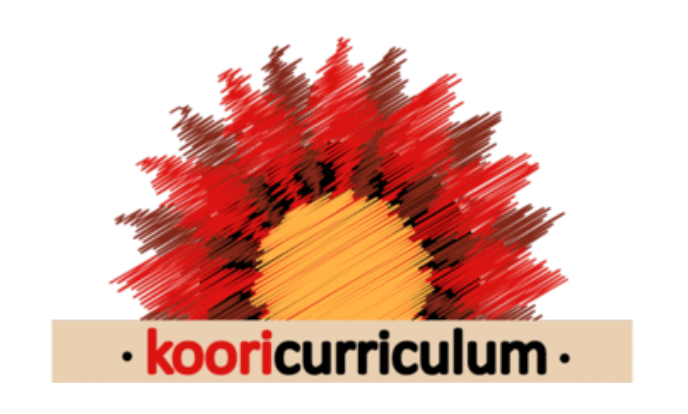Embedding Aboriginal perspectives in early childhood education isn’t just an educator’s responsibility — it’s a leadership practice.
As I travel around Australia delivering workshops, I meet countless passionate educators who are eager to make change. But the teams that truly thrive — that move from learning to action — are led by leaders who champion culture from the inside out.
Leadership in this space isn’t about having all the answers. It’s about creating a shared vision, holding space for reflection, and walking alongside your team through the process of cultural transformation.
Leadership Beyond Policy
In many services, reconciliation work sits neatly in a Reconciliation Action Plan or Quality Improvement Plan. But documents don’t create change — people do.
True cultural transformation happens when leaders see reconciliation not as an item to manage, but as a value to live. When leaders embody curiosity, humility, and commitment, it sends a powerful message to their teams:
“This matters here. This is who we are.”
Being a culturally responsive leader means you set the tone for the conversations your team has, the resources they access, and the relationships they build with community.

Cultural Stewardship: Leading with Integrity and Courage
Educational leaders are not expected to be cultural experts — but they are expected to create safe spaces for learning and growth.
This is what I call cultural stewardship — the act of holding, guiding, and nurturing the cultural integrity of your service.
It means:
- Modelling openness by engaging in your own professional learning.
- Acknowledging what you don’t know and being willing to listen.
- Ensuring decisions about Aboriginal perspectives are made with care and consultation.
- Protecting the cultural safety of staff, families, and community members who engage with your service.
Leadership in this context is both practical and personal. It requires self-awareness, emotional intelligence, and a genuine belief that reconciliation is ongoing work — not a one-off goal.
Embedding Culture in the Fabric of the Service
The most effective leaders don’t add culture to their programs — they weave it through the fabric of their daily practice.
That means embedding cultural reflection into:
- Team meetings, using yarning circles or shared reflection protocols.
- Inductions and onboarding, ensuring new staff understand your service’s cultural commitments.
- Planning cycles, linking cultural goals directly to curriculum outcomes.
- Quality Improvement Plans, where reconciliation becomes a continuous thread rather than an isolated project.
When culture is part of your structure, it becomes part of your identity.

Mentoring Teams Through Practice
At Koori Curriculum, we work closely with leaders to help them take this vision from paper to practice.
Through our Pedagogue in Residence program, I visit services regularly to work alongside educators and leadership teams. Together, we reflect on programming, planning, and pedagogy — not in theory, but in action.
Leaders learn how to:
- Facilitate yarning circles and reflective discussions.
- Scaffold educators’ confidence in embedding Aboriginal perspectives.
- Identify cultural learning moments within everyday play and routines.
- Support teams to align their work with both the EYLF and Aboriginal pedagogical frameworks such as the 8 Ways of Learning.
It’s about mentoring through doing — helping leaders see how cultural learning lives within the rhythms of their service.

Courageous Conversations and Reflective Leadership
Leadership in reconciliation isn’t always easy. It often means navigating discomfort, asking hard questions, and challenging long-held assumptions.
But it’s in these courageous conversations that real growth happens.
When leaders model vulnerability and curiosity — admitting when they’re unsure, inviting feedback, and centring Aboriginal voices — they give permission for their teams to do the same.
Cultural leadership isn’t about perfection. It’s about persistence, reflection, and relational accountability.
Sustaining the Vision
Sustainability comes when reconciliation isn’t dependent on one person’s passion, but embedded in the service’s culture.
Leaders can ensure this by:
- Embedding reconciliation goals into staff appraisal and professional development plans.
- Revisiting your Reconciliation Action Plan regularly as a living, breathing document.
- Maintaining active, ongoing relationships with community.
- Building a culture of celebration and reflection — where every step forward is recognised as part of a larger journey.
When this happens, reconciliation stops being something a service does and becomes something a service is.

Leading the Change Together
Educational leaders are the steady hands that hold this work in place. You create the culture where reconciliation can flourish — where reflection is valued, mistakes become learning, and children grow up surrounded by respect for Aboriginal and Torres Strait Islander peoples.
When leaders walk this path with integrity, their teams follow.
Because at its heart, leadership in early childhood isn’t just about managing programs — it’s about shaping people, relationships, and communities.
And when we lead with cultural understanding, we lead with heart.
If you’re ready to strengthen your leadership for reconciliation and cultural transformation, connect with us about developing a Pedagogue in Residence program at your service.
Together, we’ll build the confidence, systems, and shared vision your team needs to embed Aboriginal perspectives meaningfully and sustainably across your curriculum.




